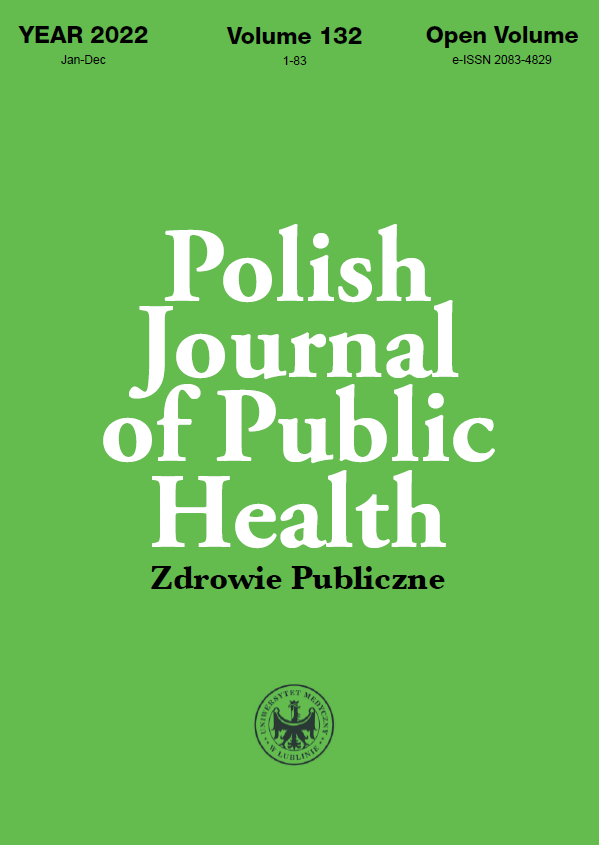The disease X: waiting for the next pandemic
DOI:
https://doi.org/10.2478/pjph-2022-0006Keywords:
zoonosis, emergency infectious disease, pandemic, pathogenAbstract
In 2008 the WHO published a report on infectious diseases against which there is no effective treatment or vaccines and therefore – diseases able to cause pandemic. In addition, so called disease X was mentioned – potentially deadly, with no herd immunity against it, holding pandemic potential, unknown in medicine yet. In 2019 such disease X was COVID-19. There is a plausibility, that next pandemic will be induced by zoonotic RNA virus (alike SARS-CoV-2) infecting people in place of intensified human-animal contacts (like high-density animal farming) without proper legal regulations in terms of animal husbandry and high population density. Also in the past major pandemics in XX and XXI centuries were result of zoonotic transmissions (HIV/AIDS, SARS, MERS, Spanish flu, avian flu, swine flu, Ebola). The key in risk recognising is governments and international healthcare agencies’ reaction – proper countermeasures to control pandemic range should be taken. Animal trade should be legally regulated and deforestation limited. There is also an urgent need for funding R&D studies on diseases listed by the WHO.
References
1. Possas C, Marques ETA, Risi JB Jr, Homma A. COVID-19 and future disease X in circular economy transition: Redesigning pandemic preparedness to prevent a global disaster. Circ Econ Sustain. 2021;1(4):1463-78.
2. WHO Research and Development Blueprint. 2018 Annual review of diseases prioritized under the Research and Development Blueprint. In formal consultation. Meeting report Genewa; 6-7 Febuary 2018. [https://cdn.who.int/media/docs/default-source/blue-print/2018-annual-reviewof-diseases-prioritized-under-the-research-and-development-blueprint. pdf?sfvrsn=4c22e36_2.] (acces: 03.06.2022)
3. Smith KF, Goldberg M, Rosenthal S, et al. Global rise in human infectious disease outbreaks. J R Soc Interface. 2014;11(101):20140950.
4. Jones, K, Patel N, Levy M, et al. Global trends in emerging infectious diseases. Nature. 2008;451:990-3.
5. Simpson S, Kaufmann MC, Glozman V, Chakrabarti A. Disease X: accelerating the development of medical countermeasures for the next pandemic. Lancet Infect Dis. 2020;20(5):e108-e115.
6. Tahir MJ, Sawal I, Essar MY, et al. Disease X: A hidden but inevitable creeping danger. Infect Control Hosp Epidemiol. 2021;1-2. doi:10.1017/ice.2021.342.
7. Iserson KV. The Next Pandemic: Prepare for “Disease X”. West J Emerg Med. 2020;21(4):756-8.
8. WHO. Prioritizing diseases for research and development in emergency contexts. [https://www.who.int/activities/prioritizing-diseases-for-research -and-development-in-emergency-contexts] (acces: 13.06.2022)
9. WHO. Monkeypox. [https://www.who.int/news-room/fact-sheets/detail/].
Downloads
Published
Issue
Section
License
Copyright (c) 2022 Authors

This work is licensed under a Creative Commons Attribution-NonCommercial-NoDerivatives 3.0 Unported License.


